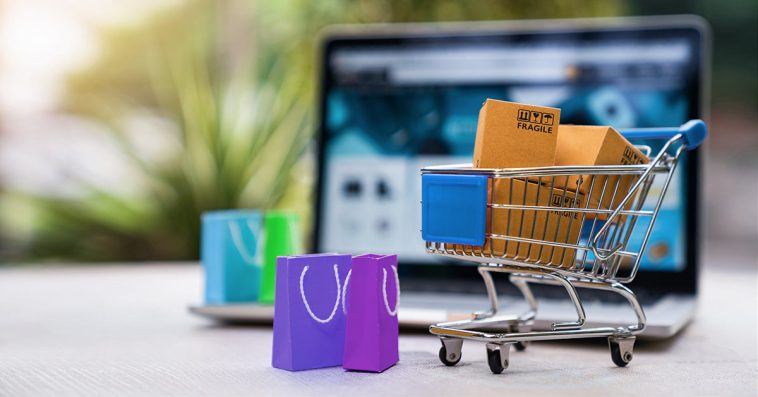Introduction.
When deciding between dropshipping with Shopify and using Amazon FBA (Fulfillment by Amazon) for your e-commerce business, it’s essential to weigh the strengths and weaknesses of each platform.
Both models offer unique advantages, but they cater to different business needs and goals.
Dropshipping with Shopify allows for greater control over your online store’s branding and customer experience.
With Shopify, I can create a customized storefront, choose products from various suppliers, and market my business in a way that aligns with my vision.
On the other hand, Amazon FBA provides the convenience of leveraging Amazon’s vast infrastructure, including their extensive customer base, fulfilment centres, and trusted reputation.
According to Statista, Shopify had approximately 4.1 million active stores as of 2023, highlighting its popularity among entrepreneurs who want to maintain a unique brand presence.
Meanwhile, Amazon’s FBA program has become a major player in the e-commerce space, with the platform handling over 1.9 billion packages in the first quarter of 2024 alone, as reported by Amazon’s statistics.
In this blog post, I’ll explore the key differences between dropshipping with Shopify and using Amazon FBA, helping you determine which model might be the best fit for your business.
Should I Dropship With Shopify Or Use Amazon FBA?
If you’re contemplating starting an e-commerce business, the decision between dropshipping with Shopify or using Amazon FBA can be a crucial one.
Both models have their unique advantages and challenges, and understanding these can help you make an informed choice.
Dropshipping with Shopify
Dropshipping is a retail fulfilment method where you don’t hold any inventory.
Instead, you partner with a supplier who ships products directly to your customers.
Shopify is a popular platform for dropshipping, offering a user-friendly interface and integration with various dropshipping apps like Oberlo.
Pros of Dropshipping with Shopify:
- Low Upfront Costs: One of the biggest advantages of dropshipping is that you don’t need to invest heavily in inventory. You only pay for products after you’ve made a sale, reducing the financial risk.
- Flexibility: Shopify allows you to customize your online store extensively. You can create a unique shopping experience tailored to your brand.
- Control Over Branding: With Shopify, you control every aspect of your store’s branding, from design to customer service. This level of control can help you build a strong, recognizable brand.
- Scalability: As your business grows, Shopify makes it easy to scale. You can add new products, integrate additional apps, and even expand to international markets.
Cons of Dropshipping with Shopify:
- Lower Profit Margins: Because you’re buying products individually from suppliers, the profit margins can be relatively low. You’ll need to sell a high volume of products to make a substantial income.
- Quality Control Issues: Since you’re not handling the products yourself, you have less control over quality. This can lead to inconsistent product quality and customer dissatisfaction.
- Shipping Times: Depending on your supplier, shipping times can be longer, especially if products are shipped internationally. This can affect customer satisfaction and lead to negative reviews.
- Competition: Dropshipping is highly competitive, with many sellers offering similar products. Standing out in a crowded market can be challenging.
Amazon FBA (Fulfillment by Amazon)
Amazon FBA is a service where Amazon handles storage, packaging, and shipping for your products.
You send your inventory to Amazon’s warehouses, and they take care of the rest. This model is known for its convenience and vast reach.
Pros of Amazon FBA:
- Prime Eligibility: Products fulfilled by Amazon are eligible for Amazon Prime, which can significantly increase your sales due to the high number of Prime members looking for fast shipping options.
- Storage and Shipping: Amazon manages all the logistics, including storage, packaging, and shipping. This allows you to focus on growing your business without worrying about the operational aspects.
- Customer Service: Amazon handles customer service and returns, which can save you a lot of time and effort. This is particularly beneficial if you’re not keen on managing customer inquiries and issues.
- Scalability: With Amazon’s infrastructure, scaling your business can be more straightforward. As long as you have inventory, Amazon can handle large order volumes seamlessly.
Cons of Amazon FBA:
- Higher Fees: Amazon FBA comes with fees for storage, fulfilment, and other services. These costs can add up, and it’s essential to factor them into your pricing strategy.
- Less Control: You have less control over how your products are stored and shipped. This can sometimes lead to issues with product presentation and delivery.
- Intense Competition: Selling on Amazon means competing with other sellers on the same platform. This can drive prices down and make it harder to stand out.
- Dependence on Amazon: Your business is reliant on Amazon’s platform and policies. Any changes to their terms or algorithms can impact your sales and operations.
Making the Decision
Choosing between Shopify dropshipping and Amazon FBA depends on your business goals, resources, and preferences:
- If you value control and brand-building, Shopify might be the better option. It allows for greater customization and control over your store’s look and feel.
- If you prefer a hands-off approach to fulfilment and want to leverage Amazon’s massive customer base, Amazon FBA could be more suitable. It offers convenience and scalability but at a higher cost.
Ultimately, both models have their merits and can be successful with the right strategy.
It’s worth considering your long-term goals, initial investment capacity, and willingness to manage various aspects of the business when making your decision.
Conclusion.
So, which platform is right for you? The answer largely depends on your unique business goals, risk tolerance, and product niche.
If you’re looking for greater control over your brand and customer experience, Shopify offers a more customizable platform.
You can build your website, integrate with various apps, and directly interact with your customers.
However, this also means you’ll be responsible for handling customer service, shipping, and returns.
Amazon FBA, on the other hand, is a great option for those who want to leverage Amazon’s massive customer base and fulfilment network.
You can focus on sourcing and selling products while Amazon handles the rest. However, this comes at a cost, and you’ll have less control over your brand and customer experience.
Ultimately, the best choice for you will depend on your specific circumstances. It’s worth considering factors such as your product type, target audience, and long-term business goals.
Do you have any other questions about Shopify vs. Amazon FBA? Feel free to share your thoughts in the comments below!





GIPHY App Key not set. Please check settings